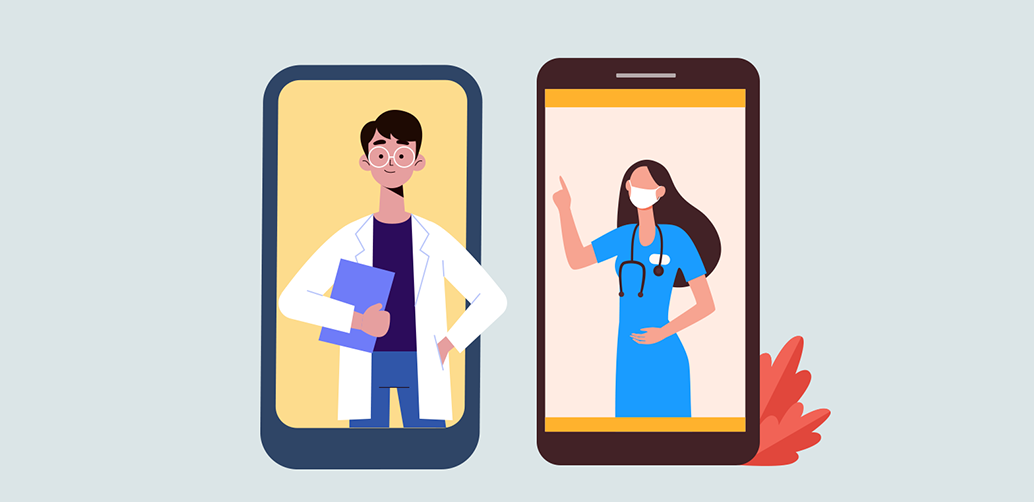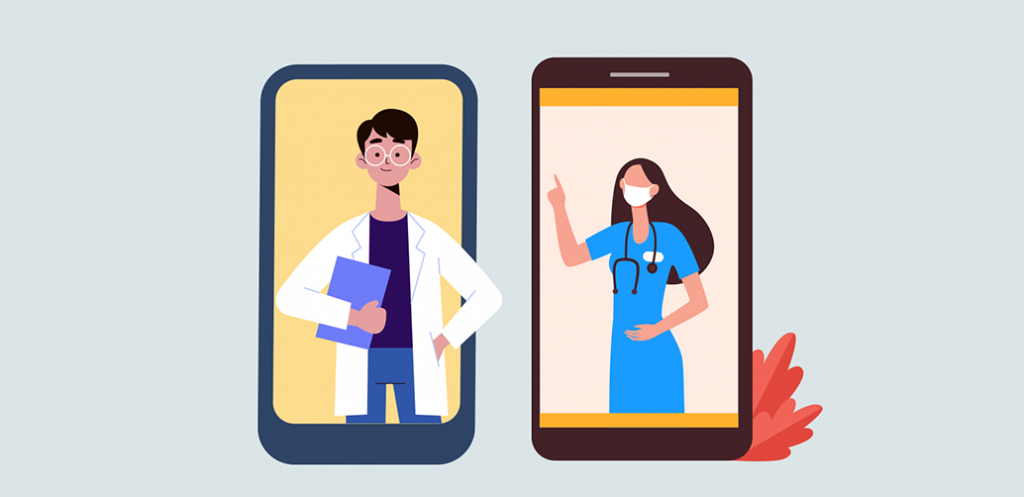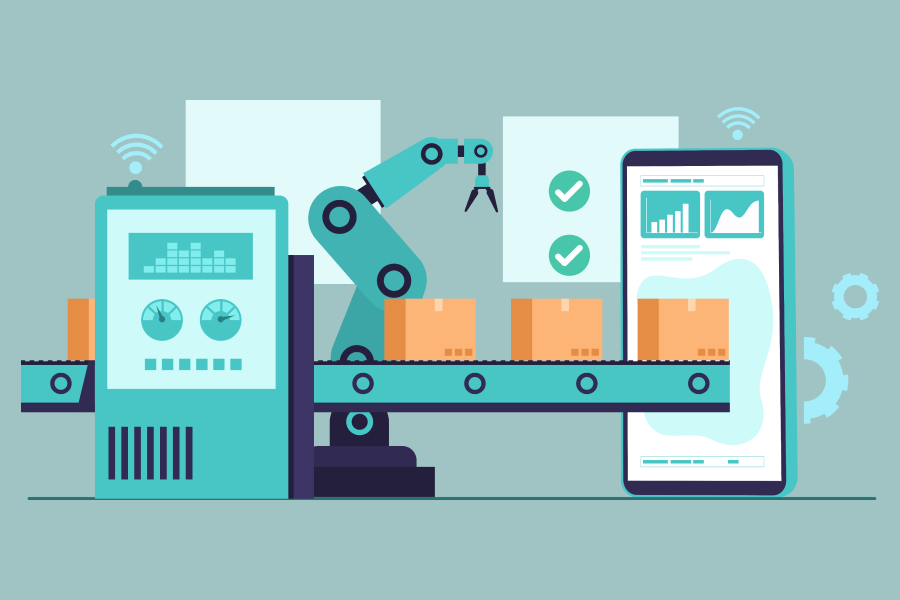Along with the advancements in healthcare technology, there has been the introduction of new ways to monitor patients and provide healthcare. Among these technologies, the Remote Patient Monitoring technology has received a lot of popularity and acceptance in the healthcare industry. With the use of remote patient monitoring, it has become possible to monitor patients remotely without the patient being physically admitted into a medical facility. This means patients are able to receive routine checkups and health monitoring facilities right from the comfortable space of their homes. This kind of remote policy has many advantages, including less healthcare providence costs and broader access to healthcare across a population.
Remote patient monitoring is used by physicians to treat chronic diseases through daily monitoring, track the changes in the physical symptoms and also provide care to patients who had undergone surgery recently. The elderly age group of any population who suffer from old-age-related diseases has the opportunity to greatly benefit through the remote patient monitoring techniques. They do not have to often commute to the hospital for monitoring and routine checks which saves them from physical stress and additional expenditure. Similarly, the patients who are diagnosed with chronic diseases that require long-term treatment are benefitting from the medical facilities that offer Remote Patient Monitoring. It’s been witnessed in several cases that through remote patient monitoring the quality of life is getting improved for the patients and health deterioration is also being prevented.
But even after contemplating these amazing benefits, a huge number of physicians are incredulous and unwilling to implement remote patient monitoring techniques. The Chief Information Officers in Healthcare also known as CIOs are facing a hard time making physicians feel confident in remote patient monitoring programs. Before the introduction of similar technologies like remote patient monitoring, CIOs were more focused on just electronic health records but that has changed a lot. As the integration of remote patient, monitoring is going to enhance the patient care CIOs are trying their best to get the policies accepted throughout the medical organization.
The section of RPM where the physicians are not confident in the patient data quality, mostly the ones which have been self-monitored by the patients and reported accordingly. Thus we need to properly plan and strategize the path to implementing the stand-alone platforms in a well-structured process. Physicians would gain confidence only when the patient data seems reliable to them and workflow through the facility remains efficient. The shift towards RPM had mostly occurred in the phase of the covid-19 pandemic where the necessity for distant care critically arose. Several healthcare facilities in the US are facing a lack of support from administrative authorities to implement remote monitoring processes in their medical structure. Due to this lack of organizational support many hospitals in the US are still deprived of the resources required for establishing a basic RPM facility.
Departmental mapping is required for RPM and ideal technology usage
When trying to implement Remote Patient Monitoring processes in a hospital we need to analyze and include every special department into consideration and make them involved in the virtual care program discussions. The remote patient monitoring programs are flexible and require sufficient planning from the hospital’s end before the IT vendor implements the setup and procedure. The crucial input from the physicians can help in prioritizing and recognizing specialty services and building a detailed plan of implementing RPM programs in a progressive format.
Each specialized department might require different kinds of gadgets for implementing virtual care systems and this needs to be assessed in coordination with the doctors, nurses, and the contracted IT vendor representatives. The testing phase adaptation with one or two units in each specialized department proves much acceptable to the physicians. In each medical department, it is possible to identify patients by the doctors who can be inducted into the Remote Patient Monitoring test program.
While prioritizing every specialty’s services, the important factors need to be given extra focus like remote functionality structure, the segregated available fund that can be utilized in setting up RPM for each department, and also the Return on Investment needs to be calculated so that the administrative authorities would be willing to provide full support to the development of Remote Patient Monitoring Programs. The requirements for each department would be different in a hospital for carrying out any stand-alone procedures of virtual care including the RPM.
As the low confidence of physicians in RPM is mainly due to data reliability, CIOs need to focus on promoting the most efficient electronic healthcare devices. There is the same kind of devices available from multiple vendors nowadays and the mistake of buying the inefficient ones should be avoided by the hospital authority and CIOs. All of these devices that will be in option won’t be pre-approved by the Centers for Medicare and Medicaid Services. This means there won’t be any reimbursements from CMS because the device won’t be FDA listed either.
When a device has got the approval of the FDA then doctors show a higher level of trust for it being passed the safety and effectiveness standards through FDA. FDA holds three different categories of regulations and checks that the healthcare devices have to pass through in getting approval. Only one single category gets applied for each device based on the risk it might be bringing to the patient’s life.
The FDA also includes clinical trials for setting up a full proof analyzing structure through which only the doctor’s reliable devices would get approval. The FDA gets deeply integrated with the device once it receives approval and a separate guideline is issued by the FDA for every such healthcare device. The additional documentation focusing on the usage, the advantages, and the disadvantages help the doctors a lot in conducting the virtual care sessions with much ease.
Using the most advanced standard of Remote patient Monitoring to get integrated with the physician’s existing schedule
Hospital physicians have an extremely tight schedule including rounds, meetings, and outpatient appointments. Except for these, there are emergency patients which often leave the physicians with very little time to even get enough sleep. Among all these the advanced remote patient monitoring process needs to be squeezed into the schedule in replacement of the in-hospital monitoring and routine checks for all the patients. To complete the remote monitoring in such a format the doctors need to have the noted present vitals of the patient and other clinical documentation already obtained.
In the modern remote monitoring format, smart healthcare devices are used at the patient’s end which records the vitals and provide them to the medical professional through an integrated software platform. In the same integrated platform, the other details are present with the Electronic Health Records along with the past and new test reports and scans. This makes the platform much more efficient and lets physicians have a smooth experience of patient monitoring and routine checkups. Most conventional vital checking healthcare devices are connected in synchronization with the integrated platform of consultation. But there are other mobile applications and web applications that are used as personal health tunnels for the transaction of patient data.
As there are no rigid resolutions and monitoring platform standards that need to be followed, this leads to challenging projects for healthcare IT vendors who are making Remote Patient Monitoring possible. But this needs to be widely understood throughout the healthcare industry that not all kinds of diseases and medical conditions can be treated in the Remote Patient Monitoring format. The most common diseases that are already being treated through the RPM procedures are Dementia, Diabetes, and heart diseases. Diabetes can be considered one of the most common global diseases that often require consultations and medication changes. One vital part of diabetes treatment is to make the patient undergo routine blood glucose tests. Due to modern healthcare technology patients can monitor them on their own through test strips, fingerstick models, and innovative glucose meters.
The modern devices have a storage feature as well which lets the patients store data and when these devices are integrated with the RPM platforms the daily vitals get stored in an organized form. This lets the doctor shape a more personalized treatment for the patients with a large set of data on patients’ vitals and symptom developmental data. RPM also has a huge role in monitoring patients who have undergone surgery recently. Previously all kinds of post-surgery patients were still kept in the hospital for a certain span for the purpose of monitoring.
But nowadays some post-surgery patients are being released in a much shorter span and monitored through remote patient monitoring techniques from their homes. Patients have highly praised this initiative and have healed much better in their comfortable homes with their families around. The other aspect of RPM which has a much greater impact is the wider availability of healthcare. Even all physicians are agreeing with the fact that healthcare would have a much more flexible structure and wider reach with the integration of Remote Patient Monitoring. There are some challenges in front of RPM which are causing blocks in its full-fledged growth but healthcare and IT leaders predict that would change in the coming years.
Endnote on Remote Patient Monitoring acceptance among all physicians
The fear and skeptical nature of doctors with Remote Patient Monitoring is not baseless. As they have to completely depend upon patient vitals data which had been remotely captured by the patient or directly through some gadgets, it makes the Doctors doubtful about the process. As the patients are not in front of the physician it also becomes quite impossible to have a recheck on their own. Patients’ vitals, symptoms input, and test records are something on which physicians are highly reliable and cannot afford vital mistakes in this section. But the existing medical structure already has equipment with a high dependency on doctors. The efficiency of the equipment has made them reliable and experts predict something similar to happen in the future with advancements in the Remote Patient Monitoring technology.

 Web and Full Stack
Web and Full Stack CMS and Frameworks
CMS and Frameworks Online Marketing
Online Marketing Cloud Services
Cloud Services ECommerce
ECommerce Mobile
Mobile




